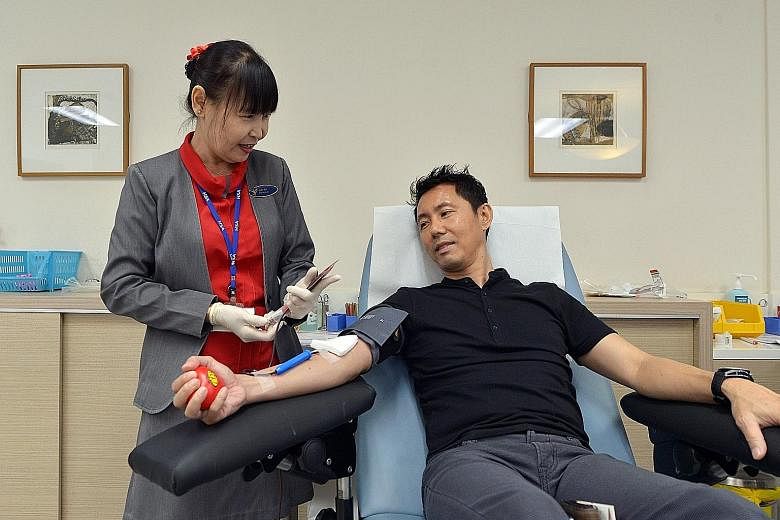Collecting blood in the 1980s was a manual and tedious affair.
Ms Judy Aw Aik Ho, a young nurse then, had to bend down and use her eyes to gauge if enough blood had accumulated in the collection bags.
At regular intervals, she made her rounds to shake the bags by hand so that the blood was mixed evenly with a chemical that prevented clotting.
"The manual shaking was tiring and I don't know how we could 'agar agar' (roughly) measure the volume of blood using our eyes but we were pretty good at it," said Ms Aw, now 53 and an enrolled nurse with the Health Sciences Authority (HSA).
An automated blood mixer is used now to mix the blood with the anti-coagulant and weigh each pack.
Ms Aw joined HSA as a nurse in 1986. Then, the blood bank was a two-storey red brick house, fondly called "ang chu" by staff, where the National Cancer Centre is now.
The blood donation beds, haemoglobin testing, medical screening and refreshments area were all cramped into one common space at that time, she recalled.
"It was narrow and dark and not air-conditioned," said Ms Aw. Whenever the team headed out for external blood drives, she and her colleagues had to stack up and carry the beds themselves.
Donating blood was also a vastly different experience for donors previously.
Instead of the stress balls that today's patients squeeze in the palm of their hands to facilitate blood circulation, donors used to grip bicycle handles then.
Donors often complained of bleeding after the donation as only a small, regular plaster was pasted over the area from which the blood was drawn. Today, colourful compressed bandages are used instead.
"We now also see more young people and females coming forward to donate blood because of rising awareness that it is safe and there is a need for it," said Ms Aw.
She left her job in 1989 to take care of her two daughters but returned to HSA in 2005.
Returning to the blood bank at Outram was intimidating at first, said Ms Aw. She was afraid that her skills were no longer relevant with the changing technology. But with training and encouragement from colleagues, she caught up very quickly.
Her warm and caring personality also made her a hit with donors. She was given an outstanding service award just three months after she rejoined, and 11 years on, she is still keeping it up. Last month, 11 donors wrote in to the blood bank to commend her for her efforts.
"I am quite a chatty person and I enjoy the friendly atmosphere and interacting with donors," said Ms Aw. Some donors trust her so much that they would call in to check if she is on duty that day before booking their appointments.
"I think they are very noble to come all the way to give the gift of life and I am just playing a very small role in the larger mission of helping to secure the nation's blood supply."


